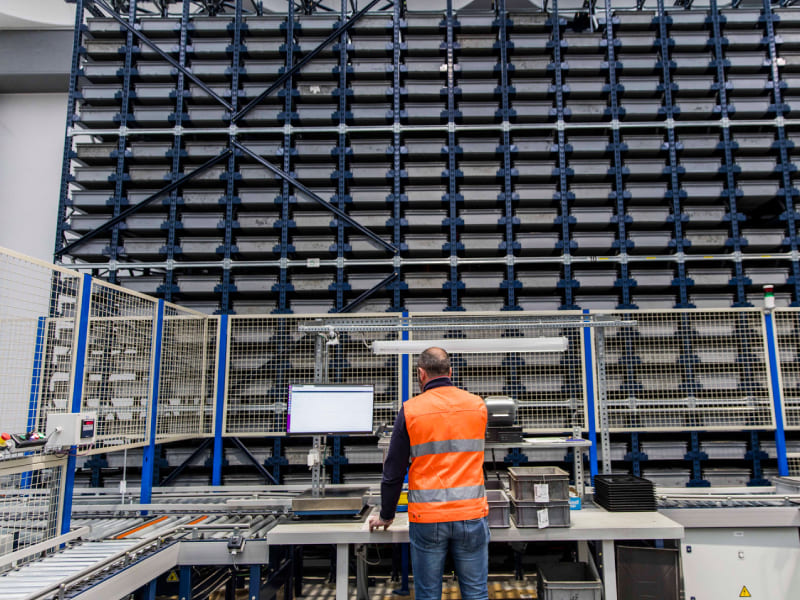Call Us :8615298359310
Call Us :8615298359310
Cross-decking is a logistics strategy designed for products that require just-in-time delivery, perishables, and high-demand items in commercial and logistics warehouses.
Cross-decking, also known as cross-docking, is a logistics practice where products from a supplier or manufacturing plant are distributed directly to a customer or retail chain with minimal to no handling or storage time.
Unlike traditional warehousing methods, cross-decking aims to transfer incoming shipments directly to outgoing vehicles, bypassing the standard storage step.
Cross-decking warehouses serve as transient staging areas where goods are sorted, consolidated, and prepared for immediate outbound shipping. This approach significantly reduces warehouse inventory levels and handling costs while accelerating the flow of goods through the supply chain.
The cross-decking process involves several crucial steps, each designed to ensure smooth and efficient product flow:
1. Inbound Shipment Scheduling: Coordinating the arrival of incoming goods to align with outbound shipping schedules.
2. Receiving and Unloading: Quickly unloading incoming shipments at designated docks.
3. Sorting and Scanning: Immediately scanning and sorting received items based on their final destinations.
4. Consolidation: Grouping items destined for the same location or customer.
5. Staging: Briefly holding sorted and consolidated items in a designated area.
6. Loading: Transferring consolidated shipments onto outbound vehicles.
7. Documentation and Dispatch: Completing necessary paperwork and sending outbound shipments on their way.
This streamlined process allows goods to flow through the facility with minimal handling, reducing the risk of damage and accelerating delivery times.

Types of Cross-Decking Systems
Cross-decking systems can be categorized based on the level of product handling and the complexity of operations:
In this model, suppliers pre-sort and label products according to their final destinations. The cross-decking facility merely transfers these pre-sorted shipments from inbound to outbound vehicles with minimal intervention.
This approach involves receiving shipments from multiple suppliers, and then sorting and consolidating them into full loads for specific destinations. It requires more handling but allows for greater flexibility in order fulfillment.
Combining elements of both pre-distribution and consolidation models, hybrid cross-decking offers the most versatility. It can handle pre-sorted shipments and perform additional sorting and consolidation as needed.
Advantages of Cross Decking
Cross-decking offers numerous benefits that make it an attractive option for many businesses:
While cross-decking offers significant advantages, it also presents several challenges:
1. Complex Coordination: well-operated cross-decking requires precise timing and coordination between suppliers, carriers, and recipients.
2. Technology Dependencies: Advanced software and tracking systems are essential for managing the rapid flow of goods.
3. Limited Product Suitability: Not all products are suitable for cross-decking, particularly those requiring special handling or storage conditions.
4. Vulnerability to Delays: Any disruptions in the supply chain can have a cascading effect on the entire cross-decking operation.
5. Initial Setup Costs: Implementing a cross-decking system often requires significant upfront investment in facilities and technology.
6. Quality Control Challenges: The rapid movement of goods can make thorough quality inspections difficult.

To maximize the benefits of cross-decking while mitigating its challenges, consider these best practices:
As technology continues to evolve, cross-decking is poised to become even more efficient and widespread. Some emerging trends include:
These technological advancements promise to address many of the current challenges faced in cross-decking operations, making the process even more attractive to commercial and industrial warehouses.
For businesses dealing with high-volume, time-sensitive products, or those looking to reduce storage costs and improve inventory turnover, cross-decking can be a game-changing tool. On the other hand, companies with more diverse product lines, unpredictable demand patterns, or limited technological resources may find traditional warehousing methods more suitable.
If you have any problems in considering the best fit for your warehouse, don’t hesitate to contact us now, our team of experts from Vison Racking is ready to advise you on the best possible solution.
Copyright © 2024 Jiangsu VISON Logistics Technology Co., Ltd. All Rights Reserved.  Network Supported
Network Supported
Sitemap | Blog | Xml | Privacy Policy